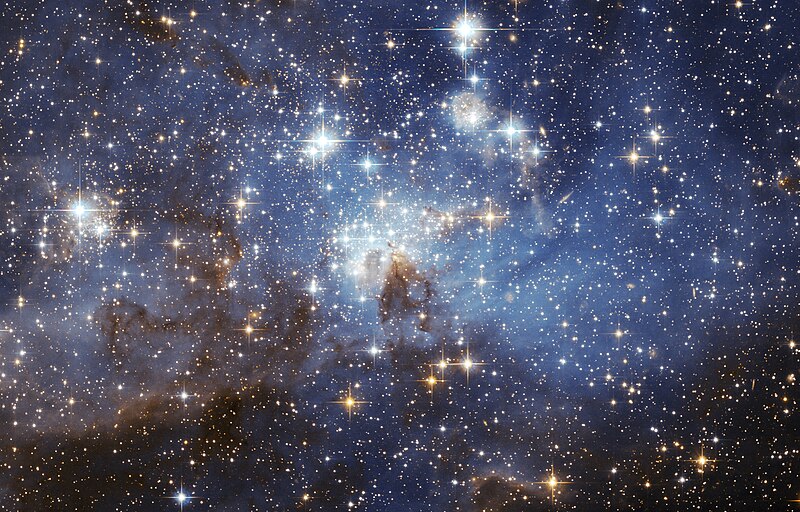달의 이름은 달이다?화성에는 두개의 달이 있지만 Phobos와 Deimos입니다, 태양계에서 가장 큰 달은 목성의 가니메데에 반경이 2,364km입니다. 태양계에서 제일 작은 달은 직경 34km의 해왕성의 Hippocampus입니다.

이처럼 태양계에는 200이상의 달이 있고 각각 고유의 이름이 있습니다. 그러나 지구를 공전하는 달에는 공식 이름이 없습니다. 이름이 그냥 달입니다. “달”이란 단어의 어원은 고대 영어 단어 m̄ na에 기원을 가지고 있습니다. Mnana는 달로 번역되는 라틴어 mensis에 기원을 두고 mensis는 측정을 뜻하는 라틴어 metri과 비슷합니다. 즉 달의 길이를 재는 데 사용되는 바람에 처음엔 달과 이름 붙였다.

달은 과거 지구의 위성에만 달이라는 이름을 사용하고 있었는데 지금은 태양계의 모든 자연 위성을 가리키기 때문에 사용되고 있습니다.태양계에는 200이상의 위성이 있고 각 위성에는 지정된 이름이 있습니다. 그러나 지구의 달 뿐 공식 이름은 없습니다.17세기 이전에는 지구 주위를 공전한다 달이 유일하게 알려진 궤도 위성입니다. 1610년, 갈릴레오 갈릴레이는 목성 주위를 공전한 4개의 달을 발견했습니다. 목성의 이 4개의 달은 그 후 갈릴레이 달이라고 불렀죠. 목성의 달에는 이오, 유로 파, 가니메데, 칼리 파업이라는 정식 이름이 있습니다. 이 발견 이후 당시 천문학자들은 목성의 주위를 공전하는 천체에 새 이름을 붙인 대신 달의 이름을 사용했습니다. 과거 달은 궤도를 도는 천체를 설명하는 단어였습니다. 달은 역사를 통해서 많은 문화권에서 다양한 이름을 가지고 있습니다. 월에 대한 정식 이름은 없지만 2개의 비공식 이름이 있습니다. 달은 고대 그리스에서는 세레네라고 불렸습니다. 그리스어로 “Selene”란 “달”과 직접 번역됩니다. 고대 로마에서는 Luna라고 불렸습니다. 로마의 Luna와 그리스의 세레네는 마찬가지로 라틴어로 달에 번역됩니다. lunar는 달을 설명하는 단어의 어근이 되었습니다. 루나는 또 달을 다른 달과 구별하기 위해서 시에서 자주 사용되었습니다. 오래 전 태양계에서 화성 크기의 행성이 있었다고 합니다. 이 행성을 소급해서 Theia라고 불렀어요. Theia는 그리스 신화의 9사람의 거인의 1사람이고, 세레네의 엄마입니다. Theia는 45억년 전에 화성 크기의 행성에서 지구와 충돌했다고 합니다. 그 충돌로 지금의 달이 생성되었다고 합니다. NASASolar System ExplorationOur Galactic NeighborhoodSkip NavigationMORE EARTH’S MOONMENUON THIS PAGEEarth’s Moon is the only place beyond Earth where humans have set foot.The Latest The Next Full Moon is the Wolf or Ice MoonThe brightest and largest object in our night sky, the Moon makes Earth a more livable planet by moderating our home planet’s wobble on its axis, leading to a relatively stable climate. It also causes tides, creating a rhythm that has guided humans for thousands of years. The Moon was likely formed after a Mars-sized body collided with Earth.Earth’s Moon is the fifth largest of the 200+moons orbiting planets in our solar system.Earth’s only natural satellite is simply called”the Moon”because people didn’t know other moons existed until Galileo Galilei discovered four moons orbiting Jupiter in 1610.NASA currently has three robotic spacecraft exploring the Moon– Lunar Reconnaissance Orbiter and the twin ARTEMIS spacecraft(not to be confused with NASA’s new Artemis program to send astronauts back to the Moon).Explore Earth’s Moon In Depth› These maps of the near and far side of the Moon show gravity gradients as measured by NASA’s GRAIL mission. Red and blue areas indicate stronger gradients due to underlying mass anomalies. Image Credit:NASA/JPL-Caltech/CSM10 Need-to-Know Things About the Moon1SMALL COMPANIONIf you set a single green pea next to a US nickel, you’d have a pretty good idea of the size of the Moon compared to Earth.2CONSTANT COMPANIONThe Moon is Earth’s only natural satellite. It goes around the Earth at a distance of about 239,000 miles(385,000 kilometers). 3LOCKED UPThe Earth and Moon are tidally locked. Their rotations are so in sync we only see one side of the Moon. Humans didn’t see the lunar far side until a Soviet spacecraft flew past in 1959.VIEWING COPERNICUS4CAN STAND ON ITThe Moon has a solid, rocky surface cratered and pitted from impacts by asteroids, meteorites, and comets.5BRING A SPACESUITThe Moon has a very thin and tenuous atmosphere called an exosphere. It is not breathable.6MOONLESSThe Moon has no moons.7RINGLESSThe Moon has no rings.8MANY VISITORSMore than 105 robotic spacecraft have been launched to explore the Moon. It is the only celestial body beyond Earth– so far– visited by human beings.9POTENTIAL FOR LIFE?The Moon’s weak atmosphere and its lack of liquid water cannot support life as we know it.10MOONWALKERSApollo astronauts brought back a total of 842 pounds(382 kilograms)of lunar rocks and soil to Earth.We are still studying them.APOLLO 11 BOOTPRINTExplorationThe Moon was the first place beyond Earth humans tried to reach as the Space Age began in the late 1950s. More than 100 robotic explorers from more than half a dozen nations have since sent spacecraft to the Moon. Nine crewed missions have flown to the Moon and back.With Earth Blue, Rocket Red and Lunar Silver for colors, every part of the identity has meaning. Credit:NASAThe former Soviet Union logged the first successes with its Luna program, starting with Luna 1 in 1959.NASA followed with a series of robotic Ranger and Surveyor spacecraft that performed increasingly complex tasks that made it possible for the first human beings to walk on the Moon in 1969.Twenty-four humans have traveled from the Earth to the Moon. Twelve walked on its surface. The last human visited the lunar surface in 1972.”That’s one small step for a man. One giant leap for mankind.”-Neil ArmstrongNow NASA is gearing up to set up a permanent lunar presence on the Moon. The Artemis program will send the first woman and the next man to the Moon and develop a sustainable human presence on the Moon and set the stage for further human exploration of Mars.The program takes its name from the twin sister of Apollo and the goddess of the Moon in Greek mythology. Artemis 1, formerly Exploration Mission-1, is the first in a series of increasingly complex missions that will enable human exploration of the Moon and Mars.MoreNASA’s Moon to Mars StrategyGravity Assist Podcast:What’s so Special About the Moon?FAQ:What is a Lunar Eclipse?During a lunar eclipse, Earth comes between the Sun and


